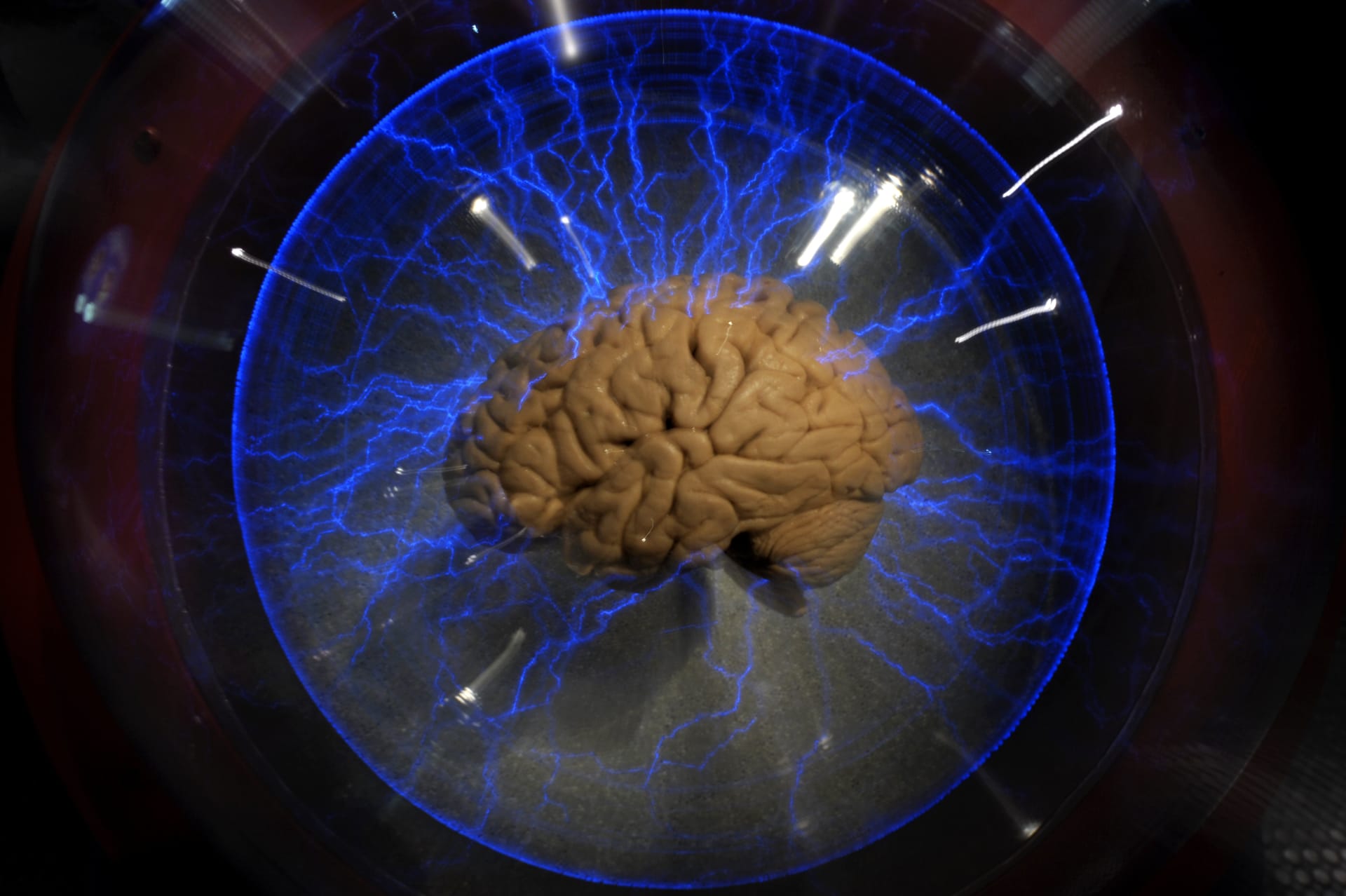دبي، الإمارات العربية المتحدة (CNN) -- نشر باحثون في جامعة كاليفورنيا الأمريكية وجامعة يورك البريطانية نتائج أبحاثهم في دورية " Social Cognitive Neuroscience journal" والتي تشير إلى أن المعتقدات الاجتماعية والدينية يمكن تغييرها من خلال "عمليات التعديل العصبي" باستخدام الحقول الكهرومغناطيسية.
أحد الحقول الجديدة نسبيا في العلاج النفسي هو عمليات تحفيز المخ التي تستخدم الطاقة المغناطيسية أو الكهربائية للتلاعب بوظائف الدماغ لعلاج الاضطرابات العصبية والنفسية، مثل الصداع النصفي والاكتئاب والاضطراب الوجداني ثنائي القطب، وكانت هناك تجارب طبية في هذا الحقل منذ الخمسينيات من القرن الحالي.
وذلك لأن العقل البشري هو جهاز كهربائي، يتكون بشكل أساسي من الخلايا العصبية التي تتواصل مع بعضها عن طريق الإشارات الكهربائية. ولذلك عندما تتفاعل الطاقة الكهرومغناطيسية مع الخلايا العصبية في الدماغ، يؤدي ذلك إلى إفراز "النواقل العصبية،" وهي مواد كيميائية تنقل الإشارات الكهربائية بين خلايا الدماغ.
والتطبيق الأكثر وضوحا في هذه المنهجية هو إثارة الدماغ لإفراز "الإندورفينات" مثل "الدوبامين والسيروتونين" وهي المواد الكيميائية التي تخلق الشعور بالسعادة، وهذا هو أساس عملية تحفيز المخ لعلاج الاكتئاب.
وإحدى التقنيات المستخدمة في مثل هذه العلاجات هي التحفيز المغناطيسي عبر الجمجمة (TMS)، التي تستخدم الحث الكهرومغناطيسي لخلق تيارات كهربائية ضعيفة في الدماغ، من خلال استخدام حقل مغناطيسي متفاوت. ولأن الدماغ يتحكم بالجسم عن طريق الجهاز العصبي، يعطل ذلك التيار الكهربائي نظام التحكم لما يقرب من 0.5 إلى 2 ميلي ثانية.
ويستخدم الباحثان كولين هولبروك وكييس إزوما هذه التقنية على مجموعة من 38 شخصا لدراسة آثارها على المعتقدات الدينية والاجتماعية للإنسان.
وقد ركزت هذه الدراسة على جزء من الدماغ الذي يُشار إليه بـ"الجزء الخلفي للقشرة الأمامية الوسطى" أو ما يُعرف بـ"pMFC" وهو المسؤول عن السيطرة على قدرة التعلم من خلال تطوير ردود الفعل استجابة للمؤثرات المختلفة، لمنع تكرار الأخطاء. فعلى سبيل المثال إذا حرق الطفل يده بعد لمسه شيئا ساخنا، ذلك الجزء من الدماغ يمنع الطفل من لمسه مرة أخرى.
واستخدم هولبروك وإزوما TMS للحد كهربائيا من نشاط pMFC ثم قاسا درجة الإيمان بالرب والملائكة والجنة.
وقد أجريت التجربة على مجموعتين، تعرضت أولاهما للعلاج الكهرومغناطيسي والأخرى كانت عبارة عن مجموعة ضابطة. ووجد الباحثون أن الذين تعرضوا لـTMS في المتوسط كانوا أقل قناعة في المعتقدات الدينية من المجموعة الأخرى بنسبة 32.8 في المائة.
كما أجريت التجربة أيضا على المعتقدات الاجتماعية مثل موقف الشخص من استقبال دولته للمهاجرين، وأظهرت النتائج أن ردة فعل من تعرضوا للعلاج كانت أكثر إيجابية نحو المهاجرين بنسبة 28.5 في المائة من غيرهم الذين لم يخضعوا للعلاج.
وتدعم هذه النتيجة افتراض أن pMFC يلعب دورا هاما في الاستجابات الأيديولوجية للشخص، وهو ما يعني أن معتقدات الناس الدينية والاجتماعية يمكن أن تكون عرضة للتعديل عن طريق العمليات العصبية المستهدفة.
